'Alien has always been the gayest sci-fi franchise'
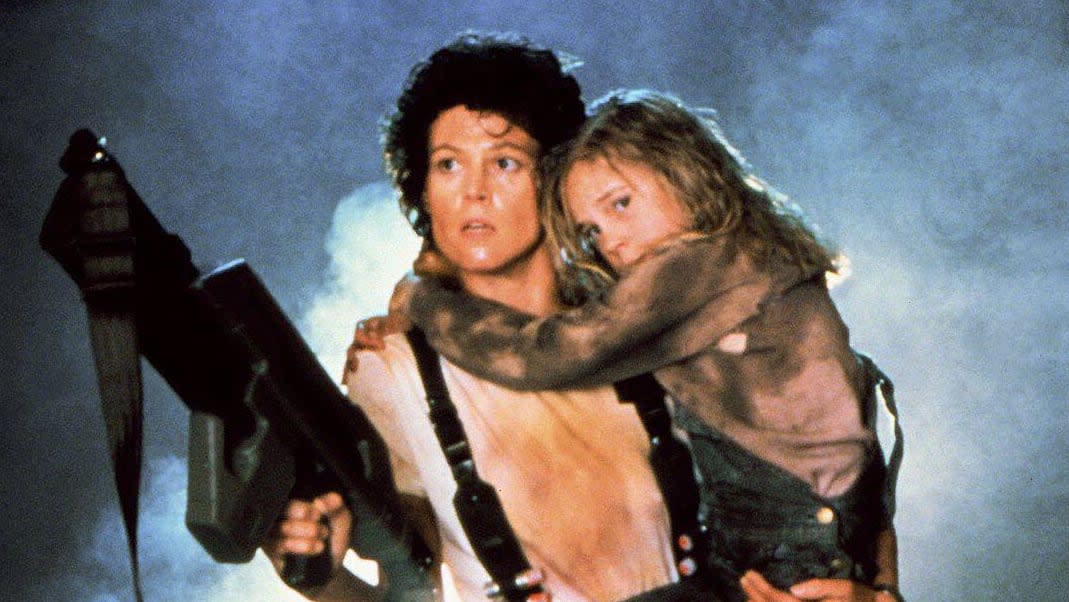
Seeing the Xenomorphs return in Alien: Romulus feels like a warm (face) hug. Well, for fans like us anyway. For the young miners who stumble across everyone's favourite aliens, it's not exactly a burst of joy, unless you count the little monster bursting out of your chest.
The story picks up between Ridley Scott's original Alien film from 1979 and James Cameron's action sequel, Aliens, which arrived seven years later. Director Fede Álvarez connects the two with a few not-so-subtle references, but what Romulus fails to deliver on compared to these two classic movies is queerness. Over four decades on, the latest Alien film is arguably the least queer yet, although even the straightest Alien movie is actually pretty damn gay when you take a closer look.
Ridley Scott didn't technically throw the first brick at Stonewall, and neither did original Alien script writer Dan O'Bannon, but together, what they did do was create one of the best and arguably gayest sci-fi horrors of all time.
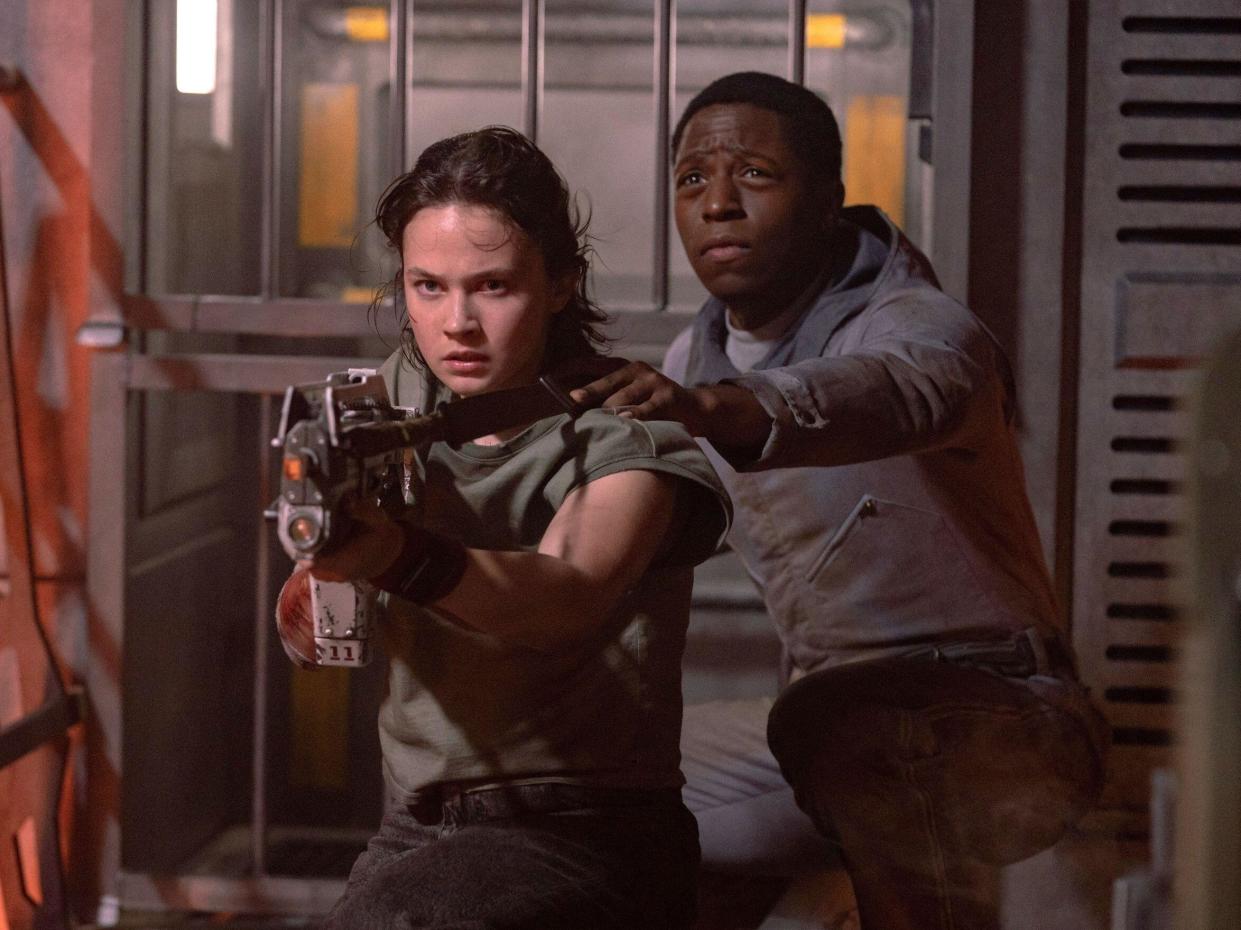
But gay how? No one's exactly queening out with the Xenomorphs, although Cameron's sequel did introduce an actual Xenomorph queen. Ripley too is a queen, or at least, Sigourney Weaver is, the icon who plays her. But Ellen Ripley herself has a far more complicated relationship with gender, as do the Xenomorphs, which is where much of the franchise's actual queerness stems from.
Read more: Alien: Romulus director shares 'brutally honest' Ridley Scott advice that helped film
But before any of that's even introduced, Alien's original Nostromo crew was deliberately conceived as unisex. O'Bannon wrote each part free of gender so the characters would be interchangeable for male or female actors (in fact, Veronica Cartwright's Lambert is revealed to be transgender in Aliens). That's why the characters refer to each other by their surnames, and wear the same loose jumpsuit attire. In doing so, typical notions of gender were instantly taken out of the equation.
And let's not forget that the entire crew was written to be pansexual at first too, hooking up with one another freely. In space, no one can hear you scream… unless you're all banging in the same ship perhaps. But the scene which revealed this was removed, much to Scott's regret, apparently. Still, it's there in the official movie novelisation for anyone who's horny or intrigued to know more.
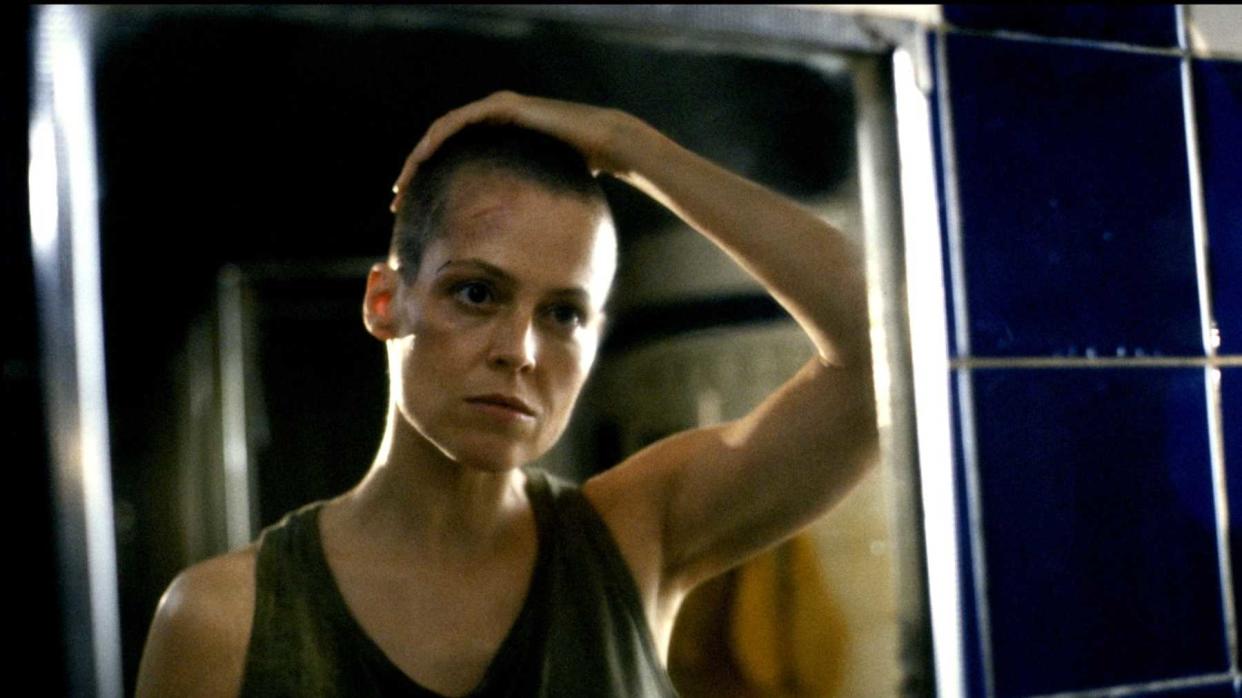
But of course, it's Ripley who defies the gender binary most of all, which is kind of wild given where the world was at in 1979. Alien takes place in the future, and more than any other character that decade, it really feels like Ripley hails from the future too.
Instead of conforming to motherhood or romantic yearnings, as so many women did in a Hollywood created by men, for men, Ripley lived freely for herself, embodying masculine action hero ideals without losing her womanhood. That wasn't easy, especially when society and characters in the film alike tried to force heteronormativity on her in often extreme, violent ways. Kind of like how I felt watching Baywatch as a kid.
Remember how Ash, the masculine-presenting android, tried to choke Ripley with a porno mag? It's hard not to read into that as Ellen being literally suffocated by the hetero expectations that straight men place on women. It's as if Ash is forcing her to become a sexual object, even though Ripley never frames herself as such, and especially not for a man.
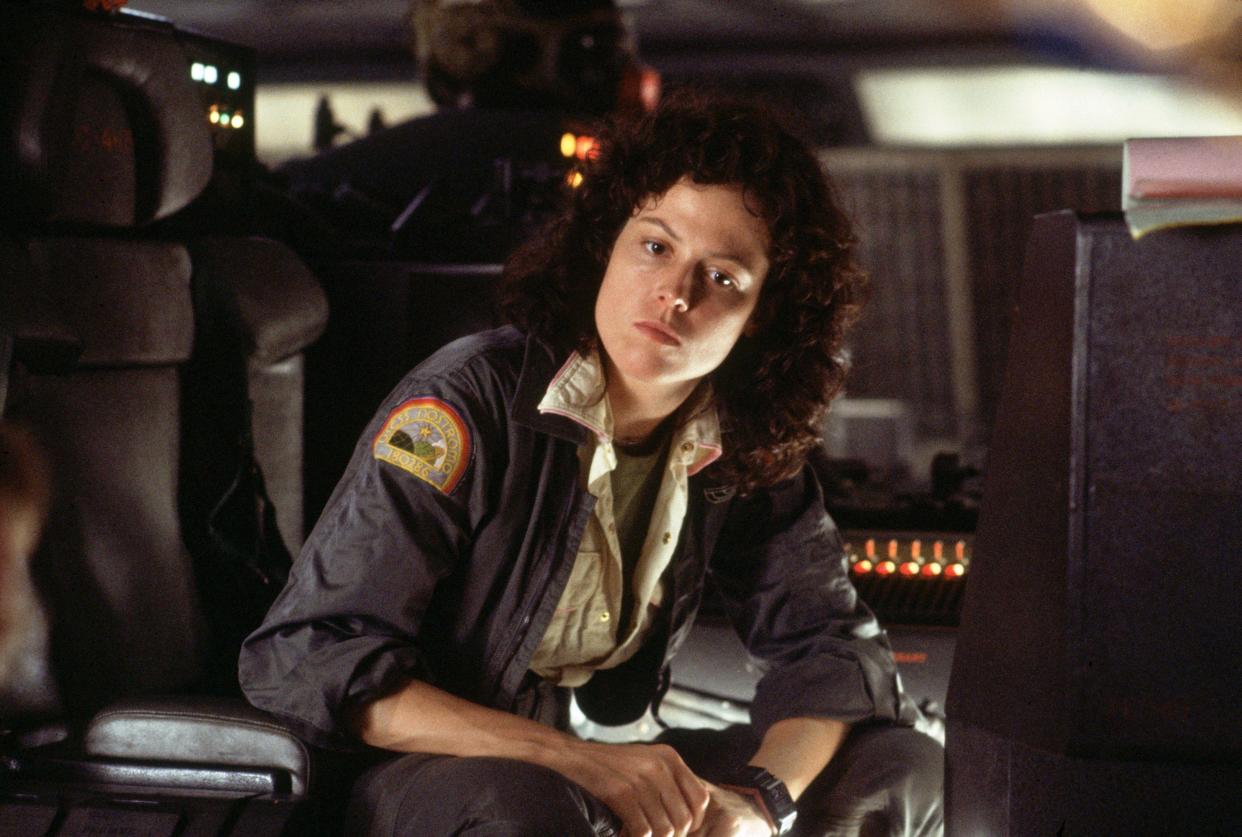
Ash isn't the only one who tries to reduce Ripley to what's between her legs either. Many academics have surmised that the Xenomorphs are essentially rapists, forcing themselves on people and impregnating them without consent. When Ripley fights this, she's also fighting back against the gender binary, refusing to adhere to motherhood and other societally prescribed notions of femininity.
Read more: Behind the scenes secrets from the original Alien movie
The Xenomorphs don't just attack women though. When the facehugger latches onto Kane in the first movie, it impregnates him through unwanted penetration, an act which is reversed when the alien bursts out through his ribcage. Men are traditionally the ones who penetrate, but here Kane is emasculated and even destroyed by the concept of being penetrated back, which speaks to fears that men hold around gender and sexual diversity.
So far, so grim, but that's not to say the Xenomorph is strictly male-coded though. The shape of its head and tail and whatever the f**k is happening with its jaw are phallic to the extreme, yet its gooey mouth and the shape of the facehugger stage is far more vaginal in appearance. It's a genderbending nightmare in a very deliberate sense, deconstructing traditional ideals around masculinity and femininity in a story where being androgynous like Ripley ultimately wins out.
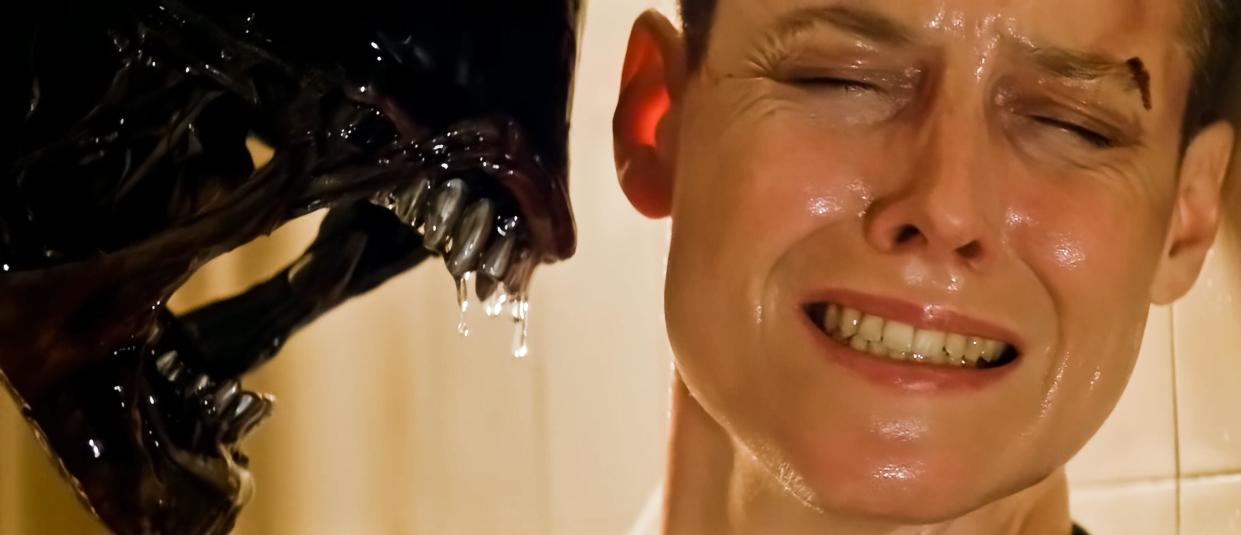
The first sequel, Aliens, continues in this vein with more emphasis on the crew, fulfilling every marine fantasy that gays in the 80s could have asked for. Remember when Hudson and Frost joked about Frost getting some Arcturian "poontang," which turned out to be male? What's an "Arcturian"? Doesn't matter. The point is they were being macho about banging a dude, which is not typically macho in an American action hero sense. It seems as though the intended pansexual vibes of the original went full blown here, so to speak.
Then there's Vasquez, a butch marine played by Jenette Goldstein, who's asked early on if she's ever mistaken for a man. It's not so much that she's just masculine though. It's more that Vasquez doesn't fit into any box, which explains why Goldstein has since been approached by all kinds of people who identify with the character.
"With Vasquez, I never said she was straight or gay," says Goldstein (via The Dallas Observer). "Because to her, it was nobody’s business. A lot of gay women come up and say, ‘Oh my god, when I saw you, and you had a masculine look to you, I saw myself. But I had straight women coming up to me with the same thing. Someone was going through breast cancer, and she told me that with each round of chemo she would think of Vasquez. A gay man from Guatemala came up to me, and he said, ‘I identify so much with her,’ but he was very feminine. Vasquez is universal."
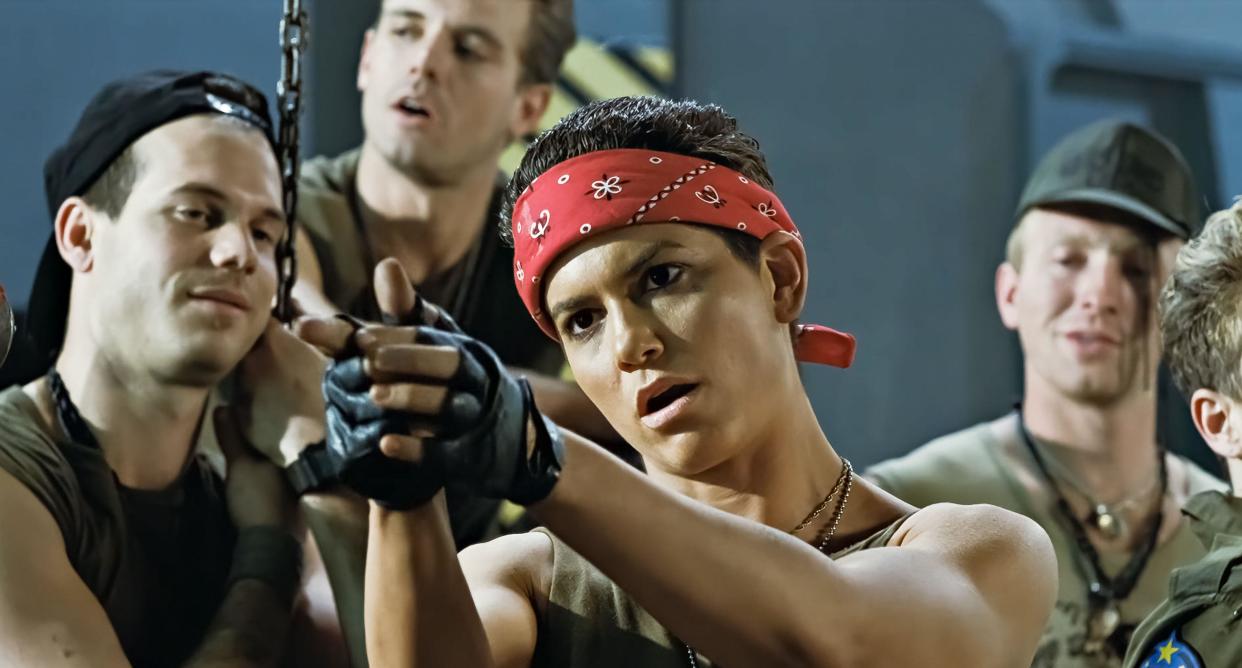
On the other hand, Aliens was also very progressive for doing the opposite, for outright labelling another character, when we spot a bio of Lambert from the previous film which reads: "Subject is Despin Convert at birth (male to female). So far no indication of suppressed trauma related to gender alteration."
It's a blink-and-you'll-miss-it moment, sure, but even so, this retcon establishes transitioning between genders as the norm in this future world. Trans and intersex representation of any kind was practically non-existent in 1986, so to see it casually established in a huge movie like this was more progressive and futuristic than any of the technological worldbuilding we see with space travel and such.
Read more: Sigourney Weaver paved way for women in horror, says Alien: Romulus star (PA Media)
The two Ripley films that followed — Alien 3 and Alien Resurrection — continue in this vein, although not quite as successfully, some would argue. Resurrection especially transforms Ripley, or an alien/human hybrid clone of her, into a far more sexualised being, pushing Ellen into the realms of exaggerated womanhood she's defied for so long. However, there's also a strength to be found in Ripley's newfound otherness, plus the vibes with Winona Ryder's character, Call, are giving lesbian homemaker by the end. But in space.
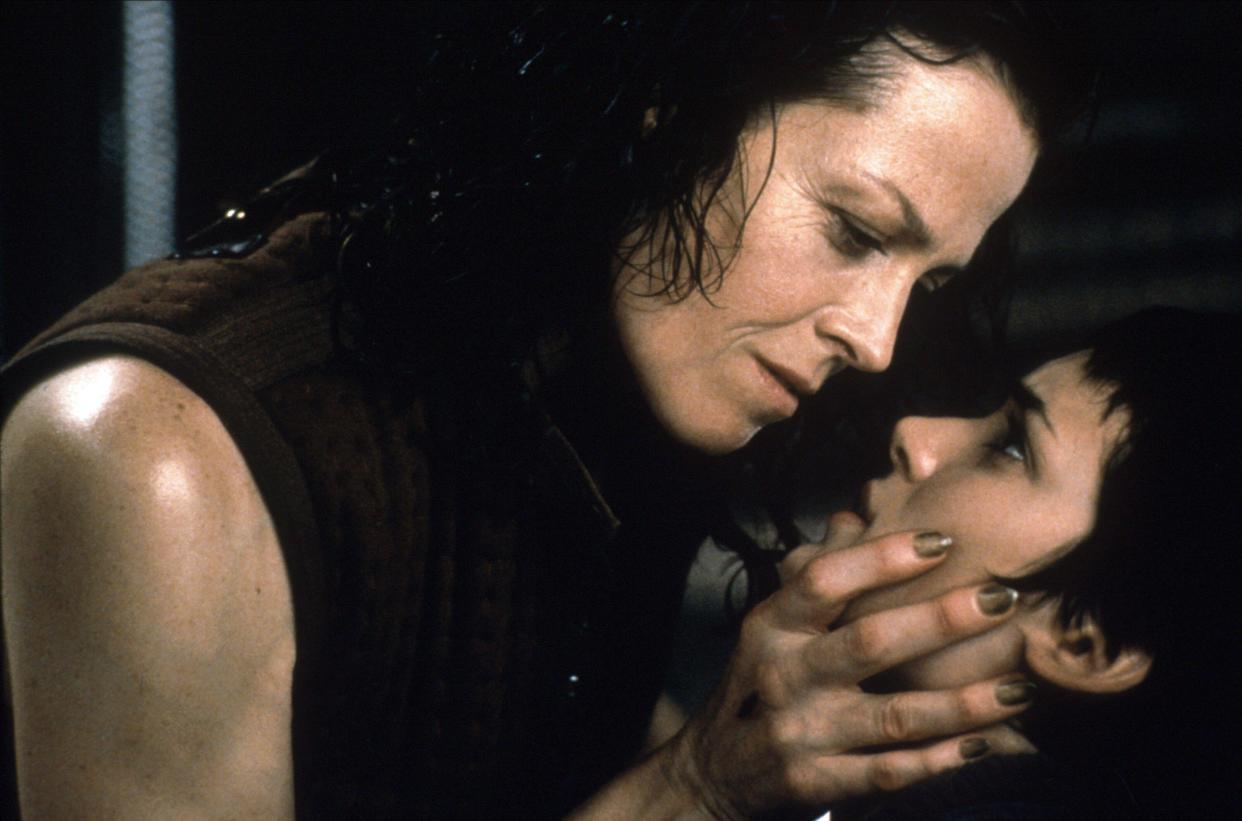
Beyond the usual Xenomorph imagery, 20212's Prometheus was a step in the wrong direction with its lack of overt queerness, much like how Charlize Theron took a step in the wrong direction when the ship came crashing down on her. Still, there's something intrinsically queer about making dumb choices like that.
It wasn't until Alien: Covenant arrived a few years later in 2017 that queerness would finally escape the subtextual crawl space and race out into the open… except, a kiss between the franchise's first gay couple, Lope and Hallett, didn't make it past the cutting room floor. At least we got to see David and Walter, two androids played by Michael Fassbender, kissing each other in one of the film's odder moments. I can't tell you how good it felt to finally see my own personal experiences represented on screen like that.
It's a shame that Romulus, the most modern Alien film, is also the most regressive, character-wise. What happened to the pansexual future that Ridley Scott's first Alien movie predicted? It's more of a reality than ever off screen, but in the films, it's another story. But hey, at least we can always count on the Xenomorphs to keep things sexy. And by "sexy", I mean horrific beyond all measure with the kind of spine-chilling body horror and sexual imagery that will make you never want to have sex again.
Alien: Romulus is out now in cinemas.


